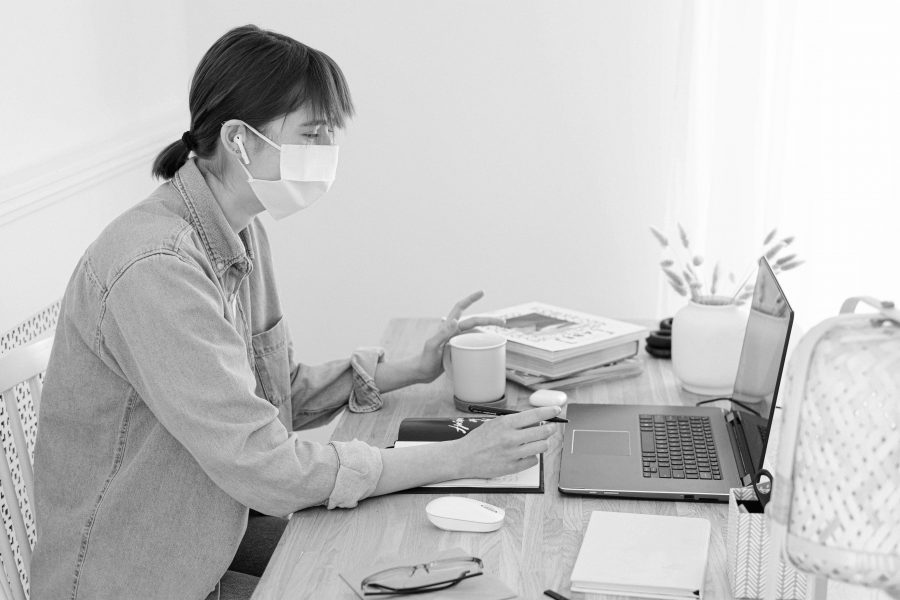As the world grapples with COVID-19, it has become apparent that many lives and sectors of the economy will be affected for many years to come. While the prediction of the nature and magnitude of the impending transformation might not be a straightforward task, the current mitigation measures being implemented globally can be conceived as a harbinger of potential long-term approaches that relevant stakeholders might consider in tackling another pandemic or indeed, other infectious diseases. With the lockdown of many global cities, urban life is expected to change and clearly, we may not be able to go back to normalliving after the pandemic [1]. The ‘social distancing’ measures have been put in place to prevent the spread of the virus and with the current level of awareness, people are likely to develop lasting habits such as reducing physical contact either with other people and high-touch surfaces, which might change how buildings are accessed and used.
There is likely to be an increase in demand for more contactless access that relies on the use of chips or facial recognition, especially in high-traffic commercial buildings. Furniture might change tooas office desk requirements are likely to increase due to reduced appetite for shared spaces and co-working [2]. And at the extreme of the change spectrum, there might even be new de-densification policies relating especially to space per employeeand maximum occupancy for lifts and receptions. In terms of mobility, people are now being encouraged to travel more to workon bikes [2, 3]. These are potential health and wellbeing issues that COVID-19 is likely to push to the front burner as far as the office space demand is concerned. It would, therefore, be expected that commercial property stakeholders will begin to rethink the relationship between offices and wellbeing of occupiers.
However, it should be mentioned that well-being and productivity impact of offices had begun to gain prominence among real estate market stakeholders even before the pandemic. With the increasing awareness of the effect of office workplace on employee performance and physical fitness, corporate occupiers have started to prioritise taking up low-risk office buildings. The WELL Building Standard(WBS)was launched in 2014 by the International WELL Building Institute to classify buildings and interior spaces according to how they support human health and wellness [4]. Through health-oriented standards such as the WBS, property owners and corporate occupiers can assess the health risk of their buildings for marketing, wellbeing and social responsibility reasons[5]. But ‘health and wellbeing’ itself is also a subset of the wider green building agenda; and while it is being treated independently by WBS, it was already a key component of the major international green building labels such the Building Research Establishment Environmental Assessment Method in the UK and the Leadership in Energy and Environmental Design in the US.
Going forward, a new class of offices that are not only green but also ‘healthy’, is likely to emerge. These ‘better offices’ are likely to incorporate infection control airflow designs and finishes[6]; and will be marked by access to natural lighting, greenery as well as adequate provision of hygiene, physical fitness and active travel facilities. Their management will also have the health and wellbeing of occupiers at its heart and might involve more regular deep cleaning and decontamination operation than what was normally required before the pandemic. Lastly, as an indication of all the aforementioned qualities, the ‘better offices’ will be highly-rated by green and wellbeing standards currently available in the market.
So, what are the implications for office property investment? ‘Better offices’ are likely to enjoy higher rents and capital values due to increasing demand from corporate occupiers. Already, there is evidence that green and healthy buildingsare more attractive to occupiers, let quicker, achieve a higher return on investmentand it is almost certain that this will continue when the market begins to recover after the pandemic [7, 8]. Consequently, buildings that fall short of these new standards might require refurbishment to mitigate potential depreciation due to low demand. However, this impact will also vary across markets with global and regional cities the ones to be hit the most by this wave of change. Prime grade A offices that enjoy demand from international and other large corporates are also likely to be affected the more compared to the rest of the market. But what will make the difference is the dominant occupiers demanding for space and their disposition to health and wellbeing.
Moreover, property developers and investors will be required to demonstrate that offices will support the health and wellbeing of users. Beyond the green labels which tend to be seen by occupiers as too generic, there is likely going to be an increase in demand for standards that focus specifically on health and wellbeing. This is because such standards make it easier for corporate organisations to demonstrate their commitment to the wellbeing of employees. Compared to the pre-pandemic period, standards such as the WBS are likely to gain more attraction as both property owners and occupiers look for ways to demonstrate the capacity of their buildings in promoting health and wellbeing.
In conclusion, COVID-19 has the potential to engender a significant change that might cause a partial or complete restructuring of the office market in response to the potential adoption of emerging health and wellbeing measures. While these changes remain as mere speculations, property market stakeholders will have to be vigilant and proactive in their response to the possible health and wellbeing concerns in the aftermath of the pandemic.
[1] https://www.theguardian.com/world/2020/mar/31/how-will-the-world-emerge-from-the-coronavirus-crisis
[4] https://www.wellcertified.com/about-iwbi/
[5] https://files.bregroup.com/breeam/briefingpapers/92935-BRE_BREEAM-health-wellbeing-agenda-A4-v2.pdf
[6] https://www.gov.uk/government/publications/guidance-for-infection-control-in-the-built-environment
[7] https://www.theinvestor.jll/news/world/office/investors-see-returns-healthy-buildings/








